Considering History: How Whiskey and Taxes Helped Create the United States
This series by American studies professor Ben Railton explores the connections between America’s past and present.
The April 15 deadline for Americans to file their taxes has arrived, reminding us that controversies over taxes are among the oldest and most defining U.S. social conflicts. Indeed, the multi-year battle over President George Washington’s “whiskey tax” was the first substantive post-Constitution domestic conflict and helped establish the United States in a number of significant ways.
Earning revenue was one of the newly created federal government’s highest priorities. The American Revolution had been a costly affair, and under the 1780s Articles of Confederation, the weak central government did not have the authority to collect taxes; that government had thus accumulated more than $50 million in debt by 1789 (with the states accruing another $25 million or so). President Washington assigned his friend and Secretary of the Treasury, Alexander Hamilton, the task of addressing that sizeable debt crisis; Hamilton first convinced Congress to consolidate federal and state debt with his 1790 Report on Public Credit, and then set about establishing new mechanisms for increasing federal revenue.
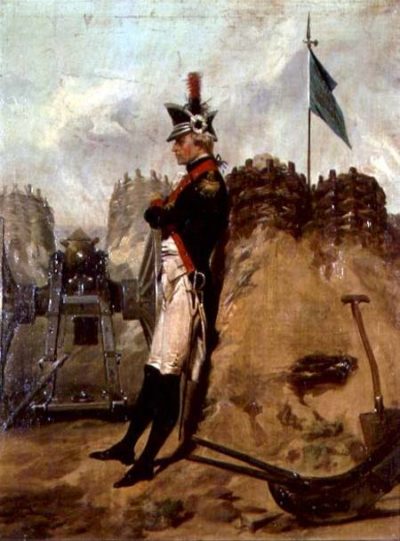
Hamilton settled on the creation of the new nation’s first domestic tax, an excise tax on distilled spirits. As whiskey was the most popular such domestic spirit, when Congress passed Hamilton’s proposed bill in March 1791, the law became known as the “Whiskey Act,” and the tax as the whiskey tax. Along with his financial allies and the President, Hamilton also had the support of early temperance reformers, who saw the excise as a “sin tax” that could curb excess drinking. But the tax was controversial, not only in the House of Representatives (where 21 of the original 56 Congressmen voted against it) but also and especially in those regions that distilled the most whiskey.
Western Pennsylvania was one of the principal such regions, and reacted with especial hostility to the whiskey tax. The area was part of the frontier of the United States in the period, and as is often the case with frontiers, was populated by communities with both less wealth and more of an independent streak than many of their fellow Americans. The region’s whiskey distillers apparently saw the tax not only as a significant financial imposition, but as an attempt to privilege larger, more incorporated eastern distillers at the expense of these independent, local businesses. The Whiskey Act also required that all stills register with the federal government or appear in federal court, which was located in Philadelphia hundreds of miles away. For all these reasons, the Western Pennsylvania distillers perceived the tax as federal overreach and invasion, and mounted a campaign of armed resistance that came to be known as the Whiskey Rebellion.
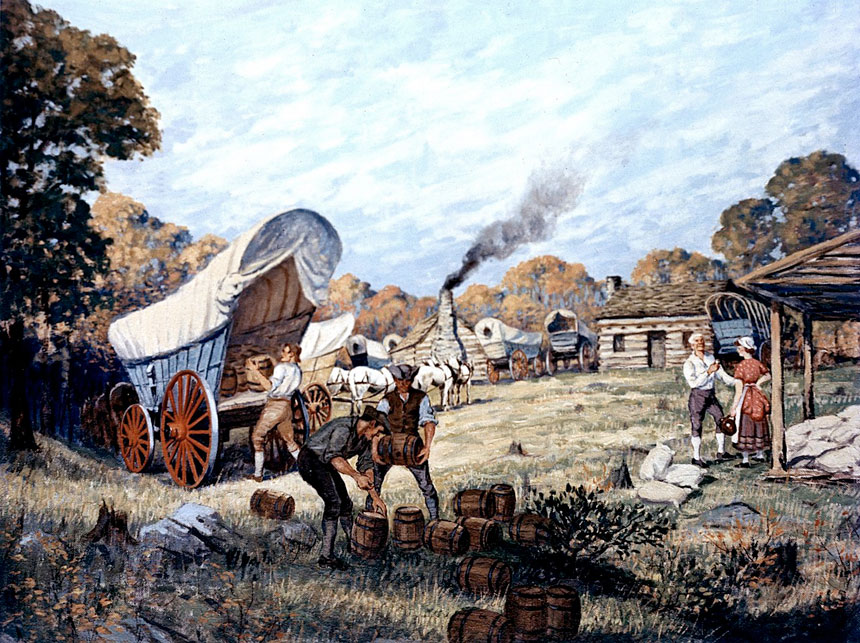
Beginning in September 1791, the rebels took numerous violent actions against tax collectors and other federal representatives. Collector Robert Johnson was tarred and feathered in Washington County on September 11, 1791, and the federal agent sent to serve warrants to Johnson’s attackers was similarly tarred and feathered. The resistance grew throughout the next two years, including both further acts of violence and an organized convention in Pittsburgh in August 1792. But it was in the summer of 1794 that the rebellion truly exploded in full armed conflict, including the July 1794 Battle of Bower Hill with federal marshals and the August 1794 march of more than 7,000 rebels (many of whom apparently did not own whiskey stills but saw the movement as an expression of broader grievances with the government) on Pittsburgh.
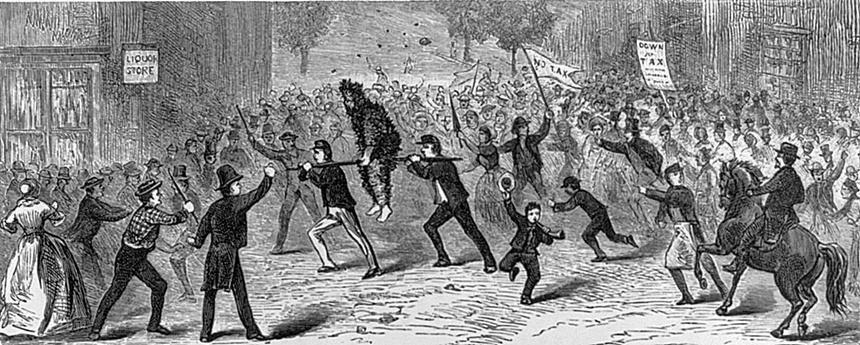
Faced with this growing rebellion, President Washington could no longer continue simply to send tax collectors and federal agents. After extended consultation with his cabinet, Washington took two complementary actions: in early August he sent three prominent Pennsylvanians (U.S. Attorney General William Bradford, Pennsylvania Supreme Court Justice Jasper Yeates, and U.S. Senator James Ross) as peace commissioners to negotiate with a committee of rebel leaders; and in late September he organized a federalized militia (under the authorization of the 1792 Militia Act) of more than 12,000 troops from Pennsylvania and three other Mid-Atlantic states (New Jersey, Maryland, and Virginia), at the head of which Washington himself marched gradually west from Philadelphia (then the U.S. capital) in a show of striking national force (marking the only time a sitting president has led troops in the field).
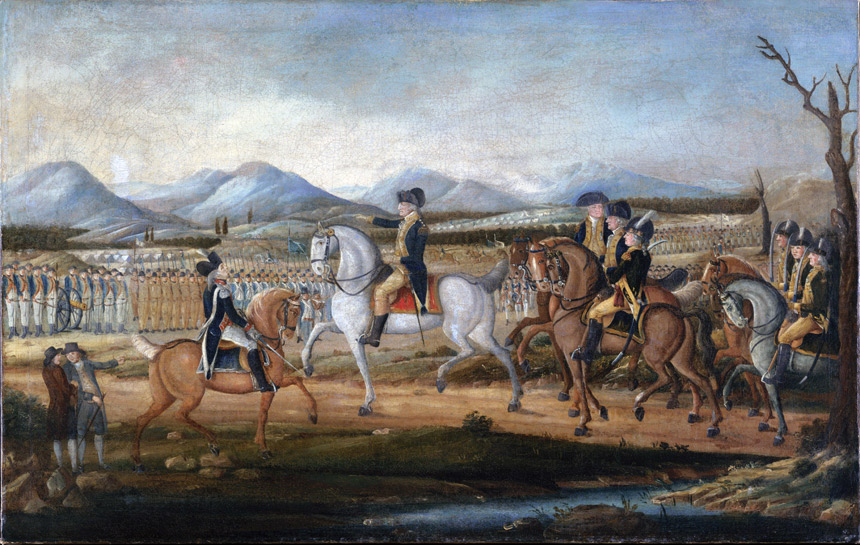
These combined actions achieved their desired effect, and the rebels dispersed without a shot being fired by Washington’s militia. Only two of the rebel leaders (John Mitchell and Philip Weigel) were convicted of treason, and both were subsequently pardoned by Washington (apparently against Alexander Hamilton’s wishes). Yet those somewhat anti-climactic final acts did not mean that the Whiskey Rebellion’s drama had not been an influential one. Indeed, both the taxation itself and (especially) the multiple layers of the Washington administration’s response to the rebellion helped make clear that the Constitution had in fact created the strong, centralized federal government for which its supporters had argued. This government could and would both levy domestic taxes and counter organized and even armed resistance of its citizens to such policies.
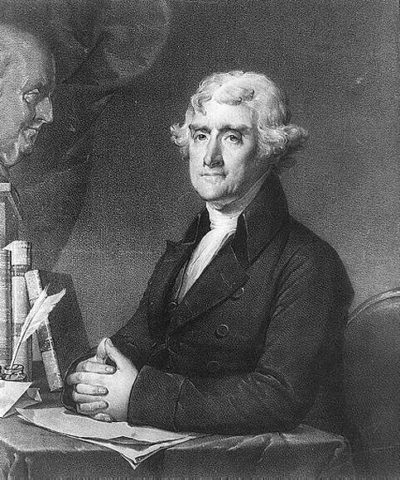
Yet at the same time, the Whiskey Rebellion’s opposition would also prove influential, and not only to future generations of tax resisters and critics. While political parties were already beginning to develop in these earliest years of the Republic, the nascent Republican Party grew significantly in response to and in support of the Whiskey Rebellion and its local and agrarian critiques of the whiskey tax and the federal government. When Thomas Jefferson won the presidency as the Republican candidate in the highly contested election of 1800, one of his early actions as president was to usher through a repeal of the whiskey tax and all internal taxes. The battle over taxation has been a political and social as well as a policy conflict since our founding moments, and seems likely to remain so throughout our American future.
Featured image: George Washington leading his troops (Attributed to Frederick Kemmelmeyer, Metropolitan Museum of Art)
10 History Facts You’re Probably Getting Wrong
“It ain’t what you don’t know that gets you into trouble,” Mark Twain once wrote. “It’s what you know for sure that just ain’t so.”
To help you avoid a little trouble in the future, we present a handful of historical myths that are commonly believed, but “just ain’t so.”
1. “Caesarean Section” got its name from Julius Caesar, who was born by this method of delivery.
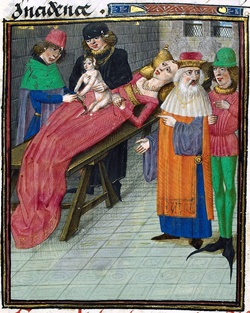
No records indicate Caesar was born by C-section. In fact, doctors in ancient Rome only performed this procedure on mothers who were dead or dying, and Caesar’s mother was reported to still be alive when Caesar was in his 40s. The word “caesarean” is probably an alteration of older Latin words for “cut” or “postmortem birth.”
2. Nineteen women accused of witchcraft in Salem, Massachusetts, were burned at the stake.
No “witches” were burned at the trials, which took place between February 1692 and May 1693. All nineteen women were hanged. Although no Massachusetts women were burned at the stake, it is estimated that many European women were. Of the 40,000-50,000 women who were executed for being witches, burning was the preferred method because it was said to be the most painful.
3. All men in the Revolutionary War era wore wigs.
Wigs became popular in the 1600s when an outbreak of sexually transmitted diseases caused many men to lose their hair. By the 1700s, long hair was still stylish, but wigs were on their way out. A historian at Williamsburg estimates that 5% of the population in colonial Virginia wore wigs.
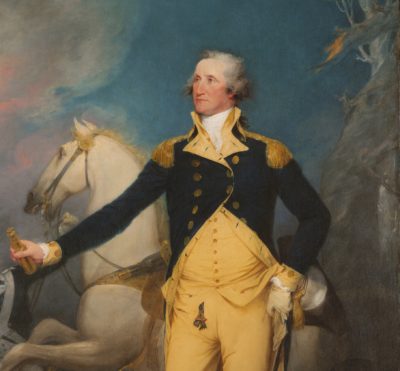
Soldiers kept their hair long, but they powdered it to make it resemble the powdered wigs of the previous century. George Washington’s hair, which you see represented on the quarter and dollar bill, was all his own.
4. On the night of April 18, 1775, Paul Revere rode through the Massachusetts countryside, shouting “the British are coming.”
The purpose of Revere’s ride was to warn the militias in Concord that the British regular troops were on their way to seize weapons and supplies the patriots had stored there. He was also ordered to warn Samuel Adams and John Hancock in Lexington that the British would probably be coming to arrest them. He did not shout “the British are coming” because it would have made no sense. At this point, most colonists still thought of themselves as British. And he wouldn’t have shouted in general because he was trying to avoid arrest by British regulars on the road.
Revere alerted the militia in Medford and Arlington before reaching Lexington and passing on his warning to Adams and Hancock. Revere proceeded to Concord but was caught by the British, questioned, and released. End of ride.
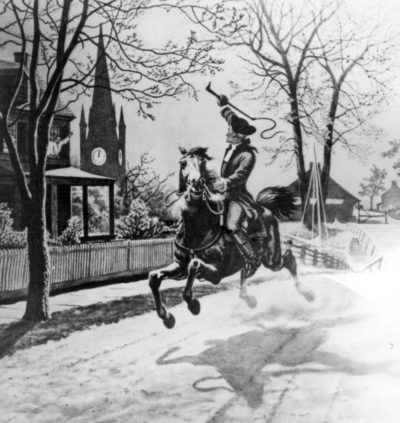
5. There were no survivors from the Alamo.
After overwhelming the men holding the Alamo in 1836, Mexican troops executed 200 of the surviving soldiers. However, 13 wives and children of Texan soldiers were allowed to leave. The Mexicans also released a slave of William Travis and a Hispanic man who fought with the Texans but convinced the Mexican soldiers he had been a captive.
6. The early days of the American West were a time of widespread lawlessness; shootings were common, as were bank robberies.
The truth of this assertion is hotly debated, with both sides citing quite different figures. However, one statistic shows four Kansas cow towns were more peaceable than their reputations. Between 1870 and 1885, the number of gunshot deaths in Wichita, Abilene, Dodge City, and Ellsworth was 45.
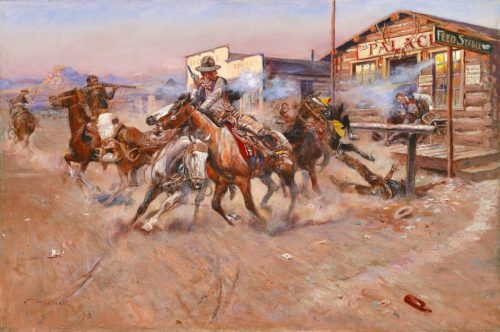
The total number of bank robberies in 15 western states between 1859 and 1900 was probably less than 10. By way of comparison, there were over 4,000 in the U.S. in 2016.
7. Thomas Edison invented the light bulb in 1879.
At least two men were ahead of Edison in the light bulb’s development. In 1802, Humphrey Davy created an electric arc lamp, and in 1840, Warren de la Rue produced a light bulb with a platinum filament.
8. After the Wall Street crash of 1929, many stock brokers committed suicide by jumping out of the windows of their offices.
The suicide rate in Manhattan rose only slightly after the crash. Only two men are reported to have jumped from a tall window. (The rate of suicides was actually higher in the summer months before Black Friday.)
9. Charles Lindbergh was the first man to fly nonstop across the Atlantic ocean.
John Alcock and Arthur Brown flew a Vickers Vimy biplane across the Atlantic in 1919. They took off from Newfoundland and landed in Ireland.
10. Every statue of a military hero on horseback tells the fate of the rider. If one hoof is raised, the rider was wounded in battle. Two hooves raised meant the rider died in battle. And a horse with all hooves down indicated a hero who survived all battles.
This rule of — hoof? — is not dependably true. For example, some of the equestrian statues at Gettysburg follow this code, but not all. In Washington D.C., only a third of 30 statues of heroes on horseback comply with this custom.
Featured image: Shutterstock
